[ad_1]
Pomegranates (Punica granatum) originated throughout the Mediterranean, elements of modern-day Iran, and northern India. Categorized as a berry, a pomegranate is a delicious and very nutritious fruit grown for its juicy seeds.
You would guess by the color that they’re extreme in antioxidants and dietary nutritional vitamins, which may protect us from sicknesses like osteoarthritis, irritation, hypertension, and adversarial free radical outcomes. Ranges may fluctuate by choice, with over 500 to pick from.
Pomegranates are comparatively low repairs and perform successfully in containers. Should you’re a affected particular person gardener, I counsel rising these sweet, tart, and funky little fruits. However, for those who occur to’re not capable of develop your private, use these methods to confirm for pom ripeness at your native farmers’ market or grocery retailer.
Like totally different crops, use the instances to maturity as your main data. Mark your calendars with the estimated first harvest date and take detailed notes all via the rising 12 months to know how the tree performs in your space’s native climate. Then, leap into 5 indicators to seek for to know your pomegranates are ripe and capable of harvest.
Weight
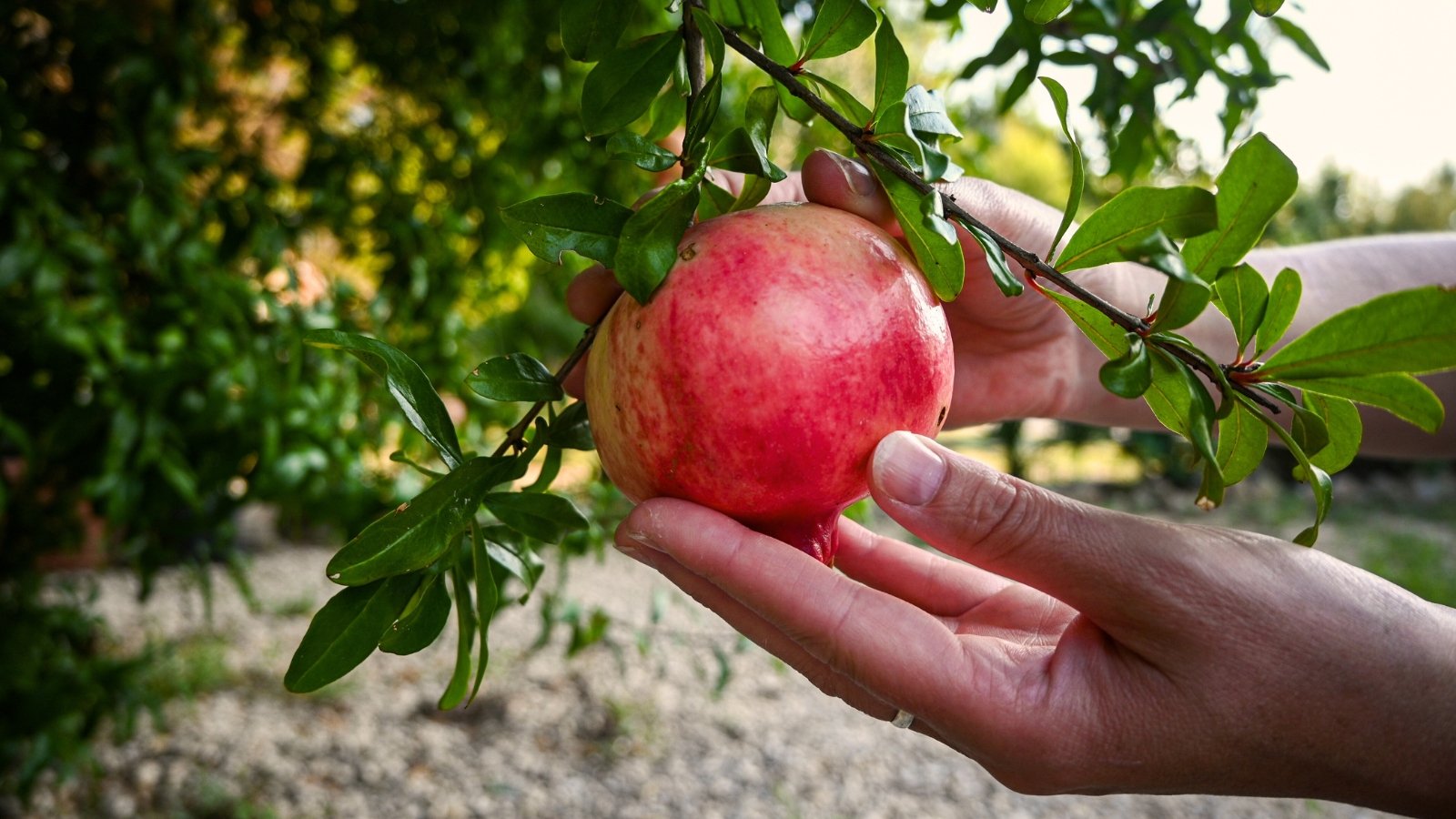

Heavier weight signifies mature innards and full, juicy arils. The bigger, the upper within the case of pomegranates. In any case, it’s the juice you want, and massive ones embody further.
Expert pomegranate growers can rely carefully on weight as a ripeness indicator. With years of holding the fruits in hand at quite a few phases of ripeness, you’ll know after they’re ready.
Let’s concentrate on the innards to know what makes up this delicious fruit’s weight. Aril loosely refers again to the seed, nevertheless pomegranate arils are the fleshy container that holds the seed. The establish pomegranate interprets to “apple of many seeds” in Latin, and pomegranates keep to this, containing a median of 600 to 800 seeds each.
Arils comprise about 40% of the fruit mass and encapsulate the seed, which makes up about 10% of the fruit. The remaining 50% consists of white flesh that holds the arils in place. Whereas technically edible, most people discard and compost it, as the texture is odd and tastes barely bitter.
The juice from the arils incorporates style, dietary nutritional vitamins, and nutritional vitamins. Take into consideration how loads work it takes to extract the juice from the fruit, and in addition you’ll understand why it’s so pricey to buy on the grocery retailer!
Type
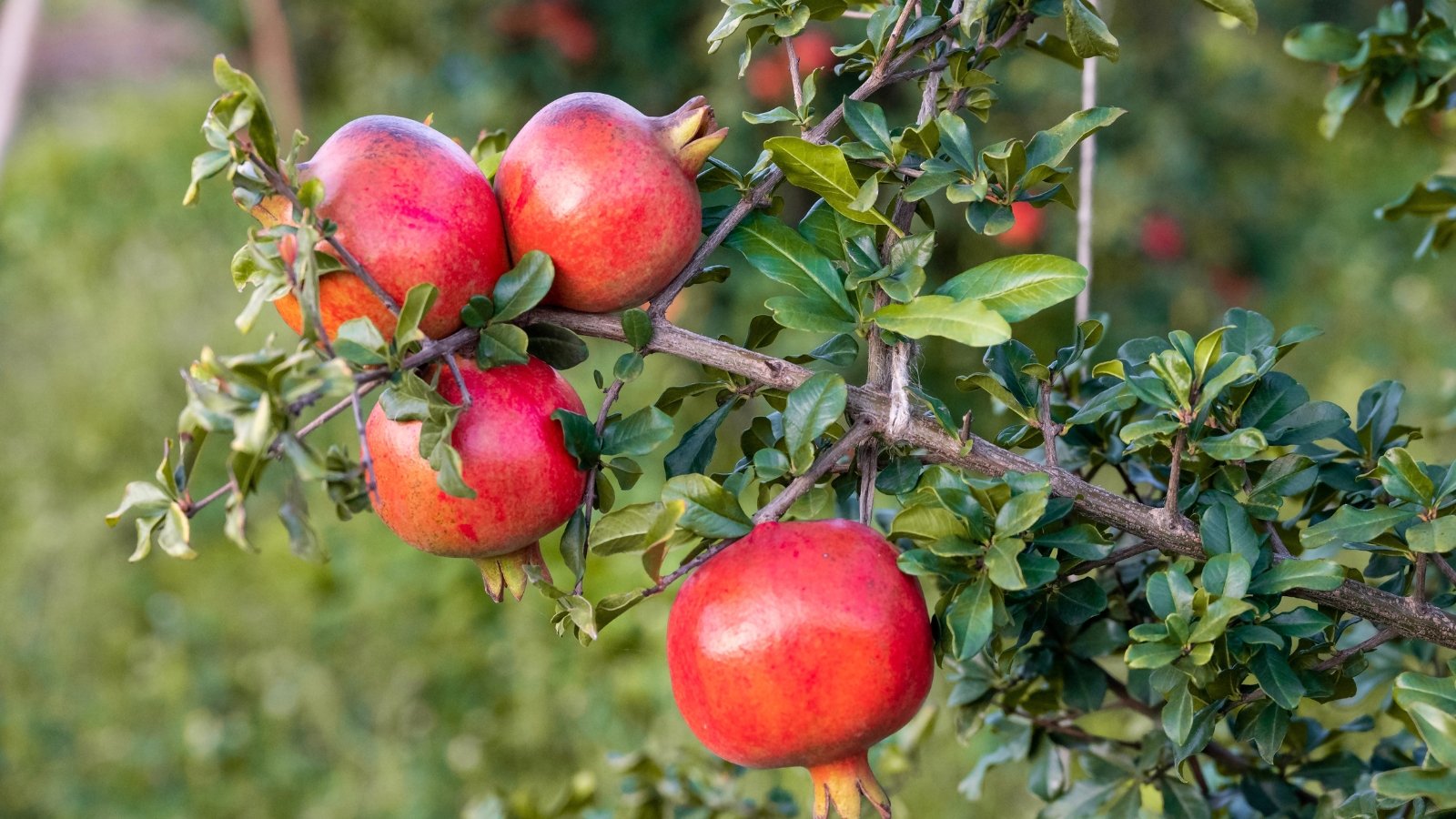

Pomegranates transition from a spherical ball type to a further oddly fashioned ball with flattened edges. They should have a slight give whilst you squeeze them, nevertheless they is likely to be overripe within the occasion that they’re mushy or mushy.
Texture
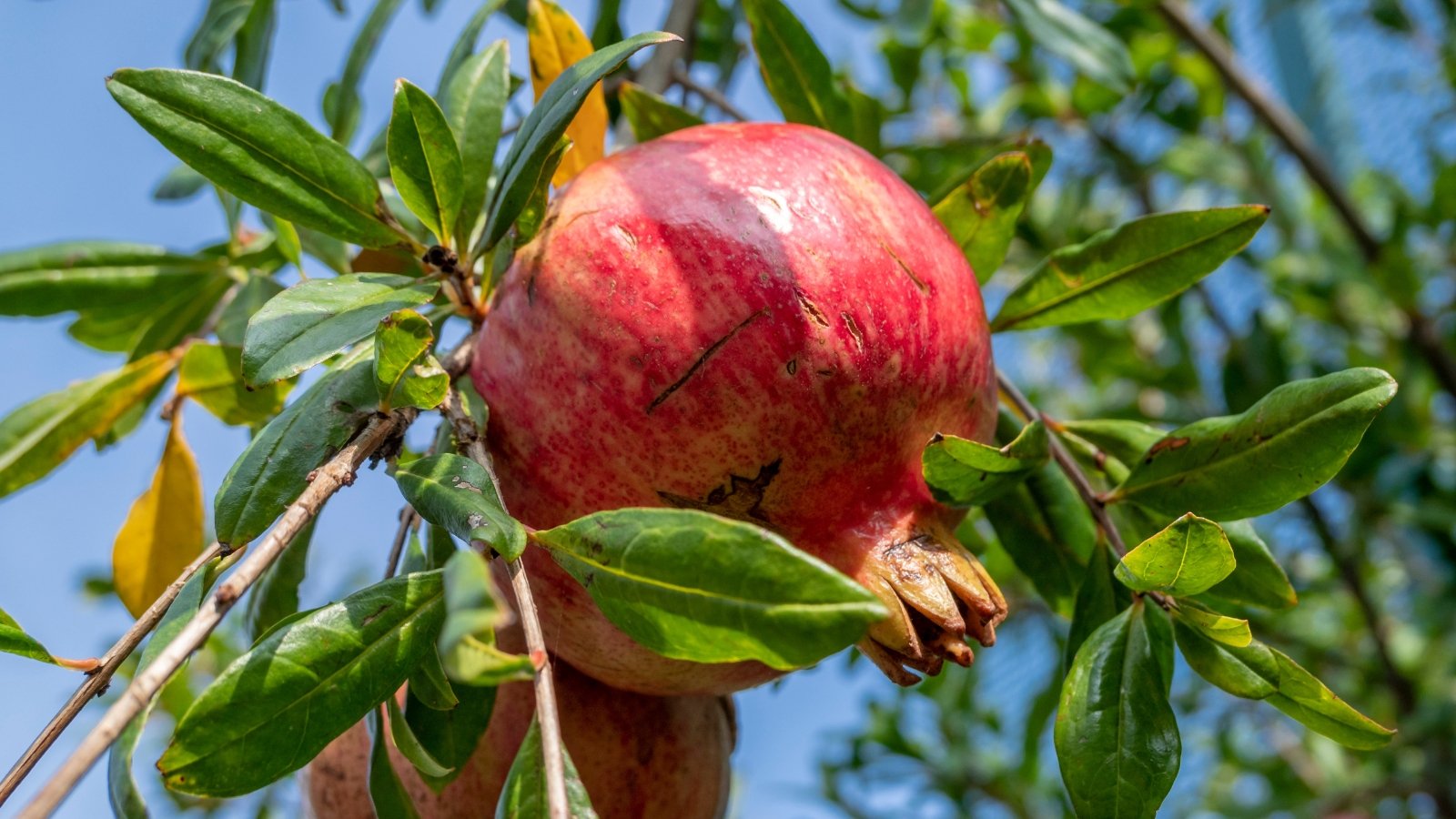

The outer pores and pores and skin turns into thicker and leathery with age and maturity. When the fruit is ripe, likelihood is you may uncover small cracks, and the pores and pores and skin is easy to scratch and puncture with a pin or fingernail. The fruit innards acquired’t probably be within the good type if the floor is bruised or has large cracks.
Skilled tip: Ignore options to attend until the fruit has completely cracked open, as this invites pests, sickness, and lack of style.
Sound
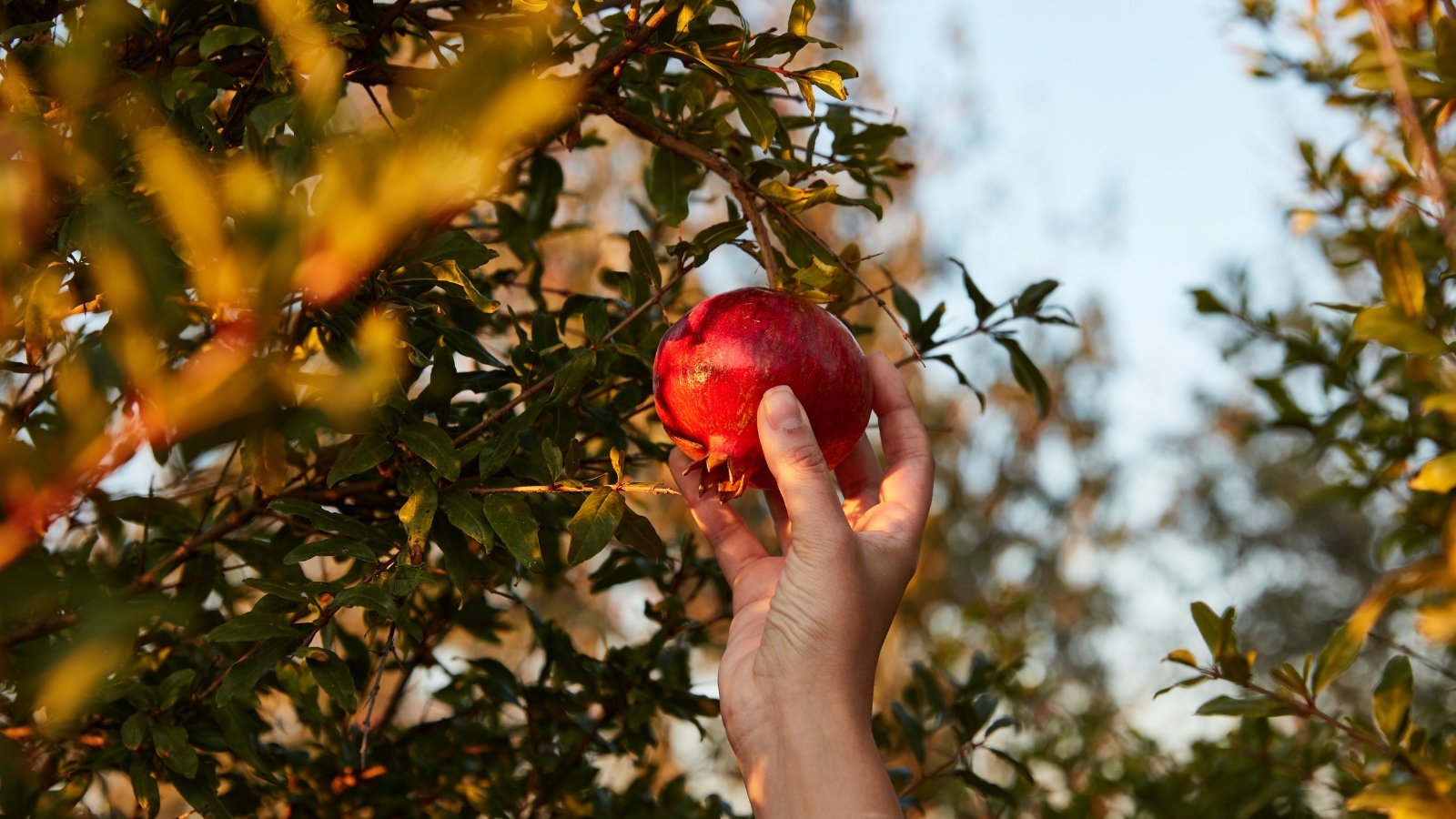

Like watermelons, a ripe pomegranate’s sound changes as a result of it ripens. A uninteresting, heavy thud will occur when the arils inside are juicy and ready for consumption. Some identify the sound barely metallic when it’s ready. Knock gently on one among many flattened edges and listen to intently.
Skilled tip: Report your self knocking on the fruit all via the maturity phases for future reference. This data will probably be instrumental throughout the coming seasons if that’s your first time rising them.
Color
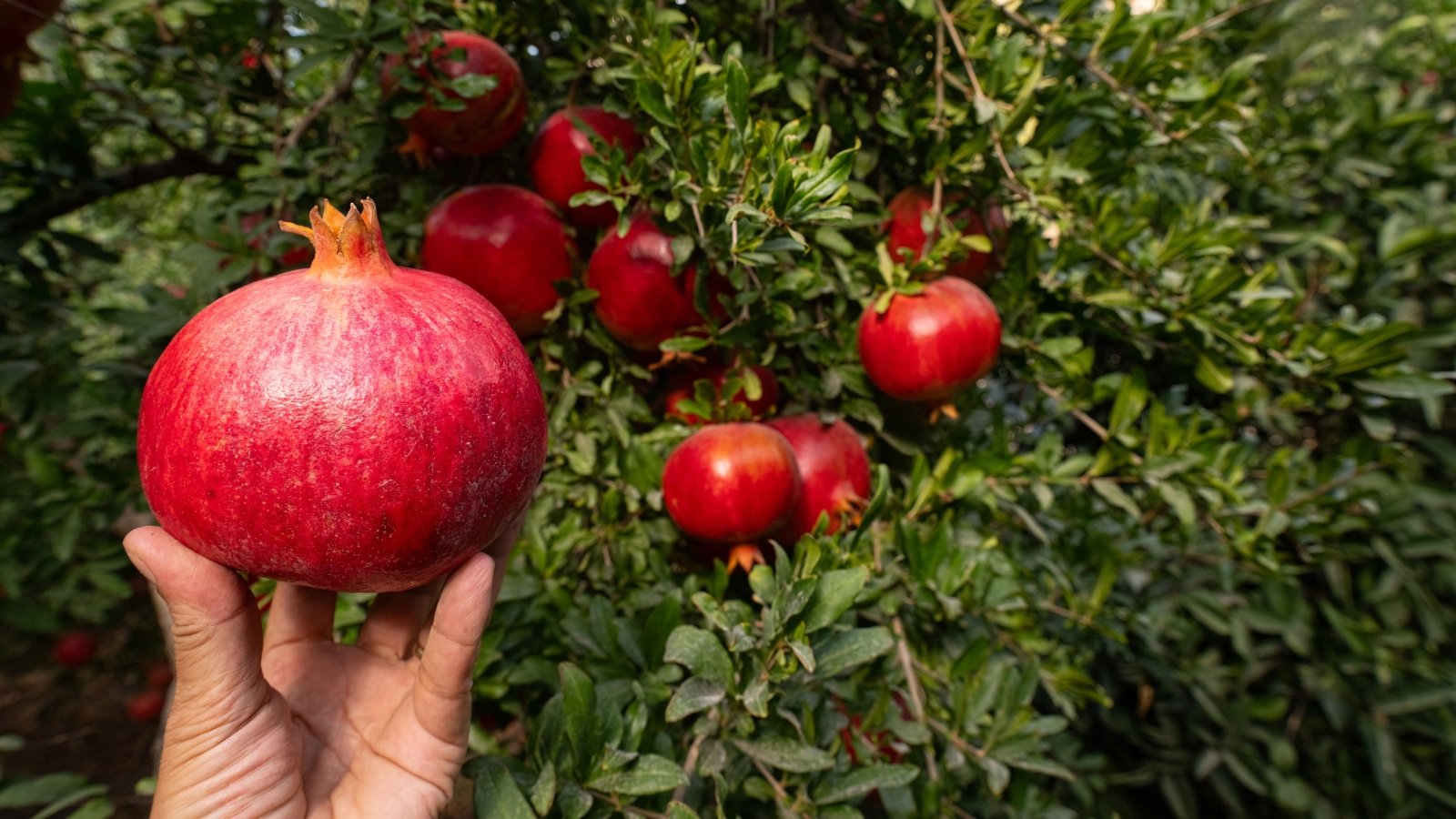

Exterior coloration is not basically essentially the most right indicator of ripeness on account of variations in varieties in a number of areas. Completely ripened pomegranates range from yellow to pink to purple and purple, indicating they’re ready to reap. However, some preserve inexperienced. Take into consideration the variations in these fully totally different cultivars:
- ‘Haku Botan’ skins keep a pale yellow when ripe
- The mature skins of ‘Kara Gul’ are deep, rich burgundy
- ‘Unbelievable’ flip shiny, candy-apple purple, and are terribly shiny
- ‘Gissarskii Rozovyi’ is a mottled yellow and pale pink
The skin pores and pores and skin will probably be shiny, almost as if it has been shined with oil for present.
Getting Ready To Harvest Pomegranates
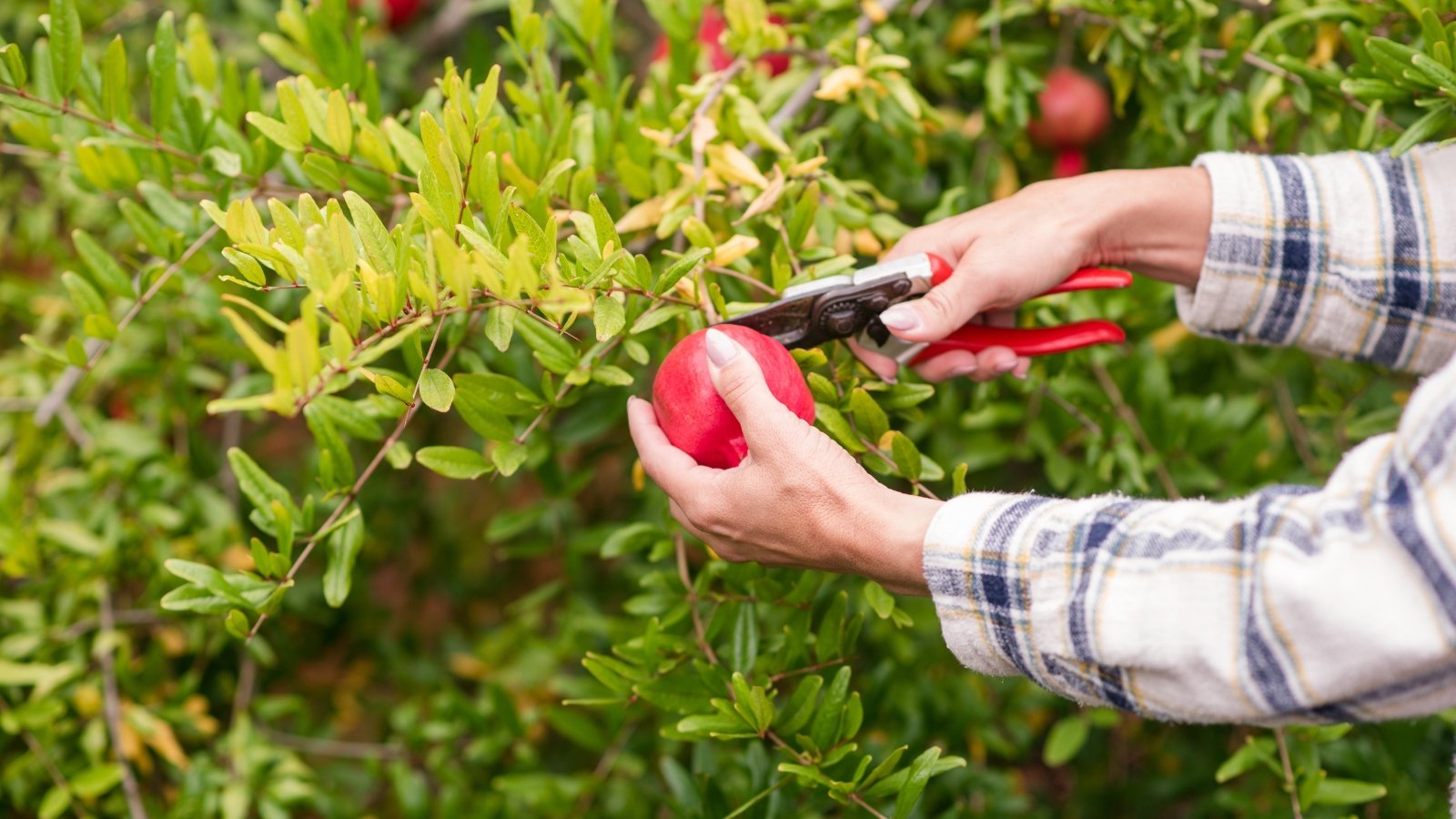

Most pomegranate varieties take three to 4 years to establish sooner than getting a superb amount of fruit, whereas others will set fruit in 12 months two. Allow the appropriate days to go (180 to 215), then use these indicators to substantiate your pomegranates are ready to reap.
Wait until the fruit is ripe for the sweetest, juiciest arils attainable. Relying in your space and the vary, plan to reap pomegranates sometime in late fall, September, or November.
Use clear, sharp shears and steer clear of pulling. Leaving the calyx intact will help the fruit preserve hydrated and may improve its storage capabilities. Decrease as shut as attainable to the division, taking the stem with you.
Skilled tip: Whereas the fruits acquired’t ripen off the vine, the arils will sweeten, so keep onto any you by chance harvested early. Protect them in your counter away from totally different ripening vegatables and fruits and out of direct daylight.
Storage
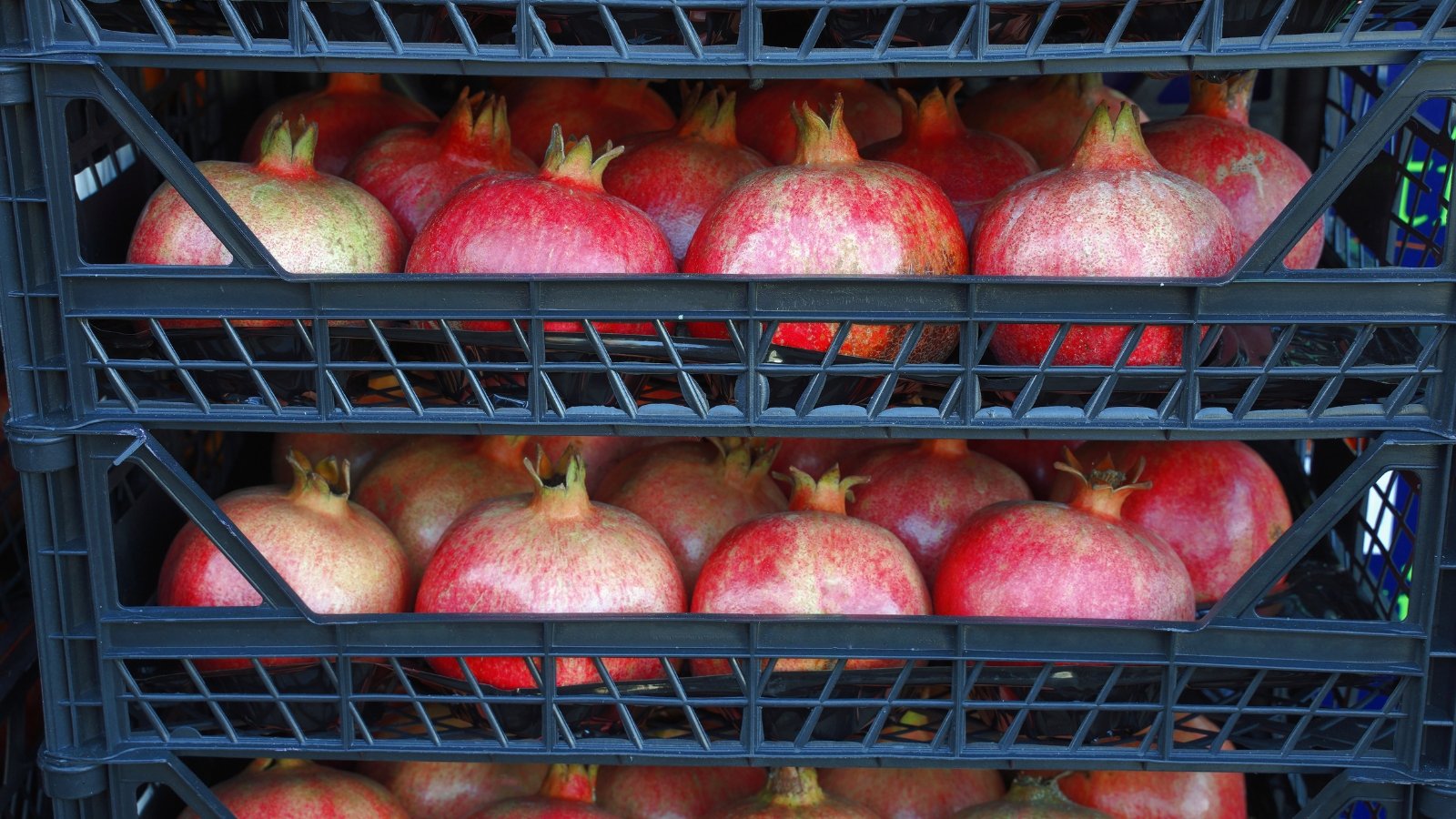

Retailer fruits modern for a few week in a dry, darkish place. After each week or so, add unused fruits to your fridge crisper drawer for plenty of months. A vented bag will allow the fruits to breathe and keep them from going mushy, and a single layer will keep them from getting damaged.
Should you want to freeze the arils for later use, take away them by doing the subsequent:
- Decrease the fruit in half in no particular orientation.
- Place a bowl beneath your working space to catch arils and juice.
- Use the once more of a wooden spoon to thump the surface pores and pores and skin repeatedly, gently squeezing the fruit.
- As arils launch, likelihood is you may must pry out plenty of the white, fleshy membranes to loosen the innermost arils.
- Proceed until every halves are empty.
- Retailer for as a lot as one 12 months in a freezer safe plastic bag or container.
Using Pomegranates in The Kitchen
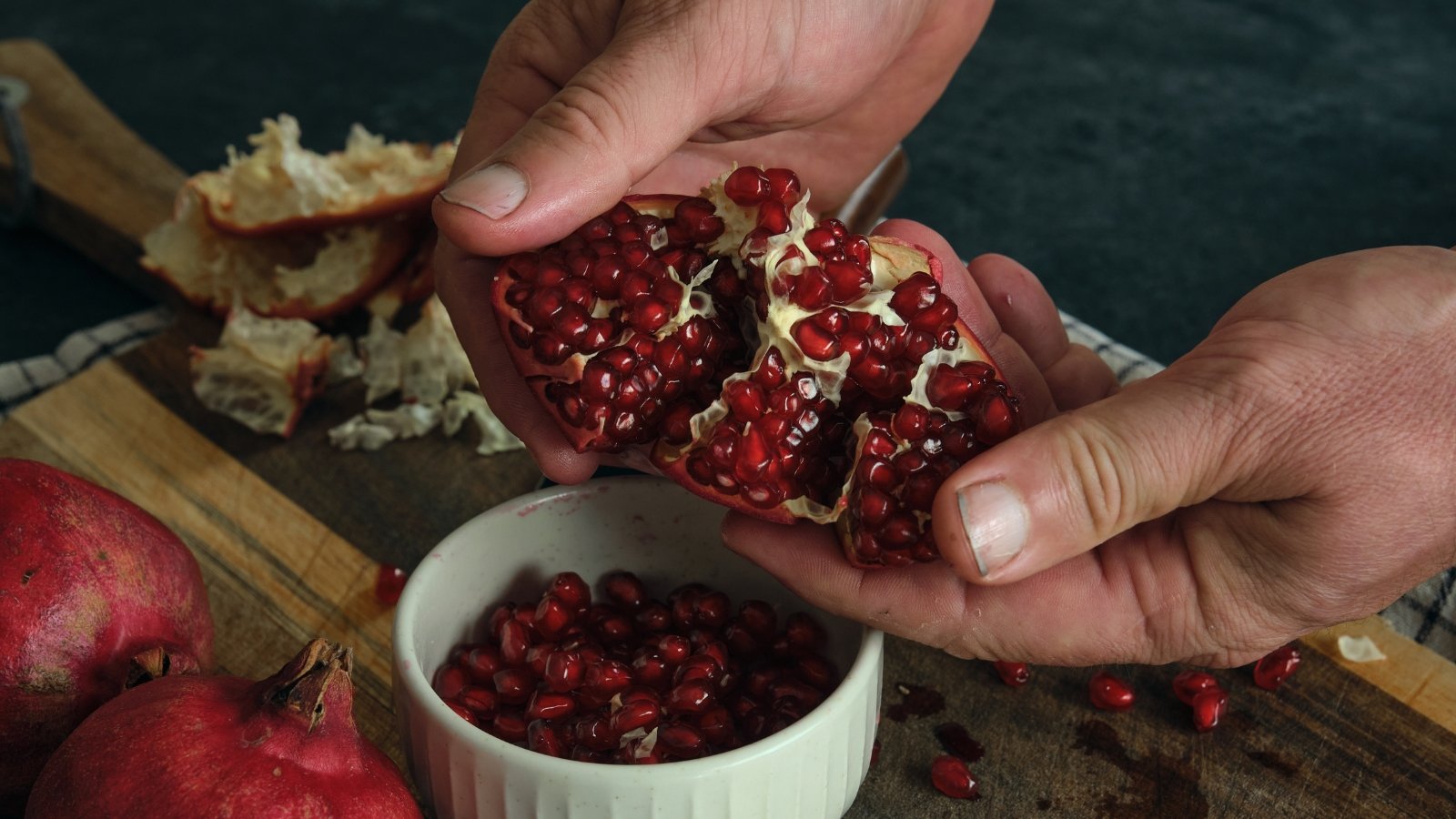

Now that you just simply’ve realized learn how to reap ripe pomegranates and get these juicy little arils out of the flesh, listed beneath are only a few strategies to pair them with totally different flavors in fall and winter dishes:
- Add a small dish of them to a charcuterie board. They pair successfully with nuts and cheese.
- Toss them proper right into a baked apple or pear crisp recipe for a novel, tart burst of style.
- Pair them with candied walnuts and feta cheese in your spinach salads for a twist.
- Cook dinner dinner them down proper right into a glaze to prime roasted winter squash or transient ribs.
- Use them in a trip dessert.
Concepts For Pomegranate Rising Success
- Pay attention to the instances to maturity of the vary you’re rising.
- Don’t rely solely on the surface pores and pores and skin coloration for ripeness.
- Stay away from prepared until the fruit cracks.
- Attraction to pollinators like butterflies, bees, wasps, and moths by planting crops they love. Whereas the bushes don’t require one different tree for cross-pollination, yields may improve for those who occur to plant one different shut by.
- Solely fertilize all through the primary few years when the shrubs are rising.
- Current numerous daylight and well-draining soil. They’ll perform biggest in USDA Zones 8 to 11.
- Prune repeatedly.
[ad_2]
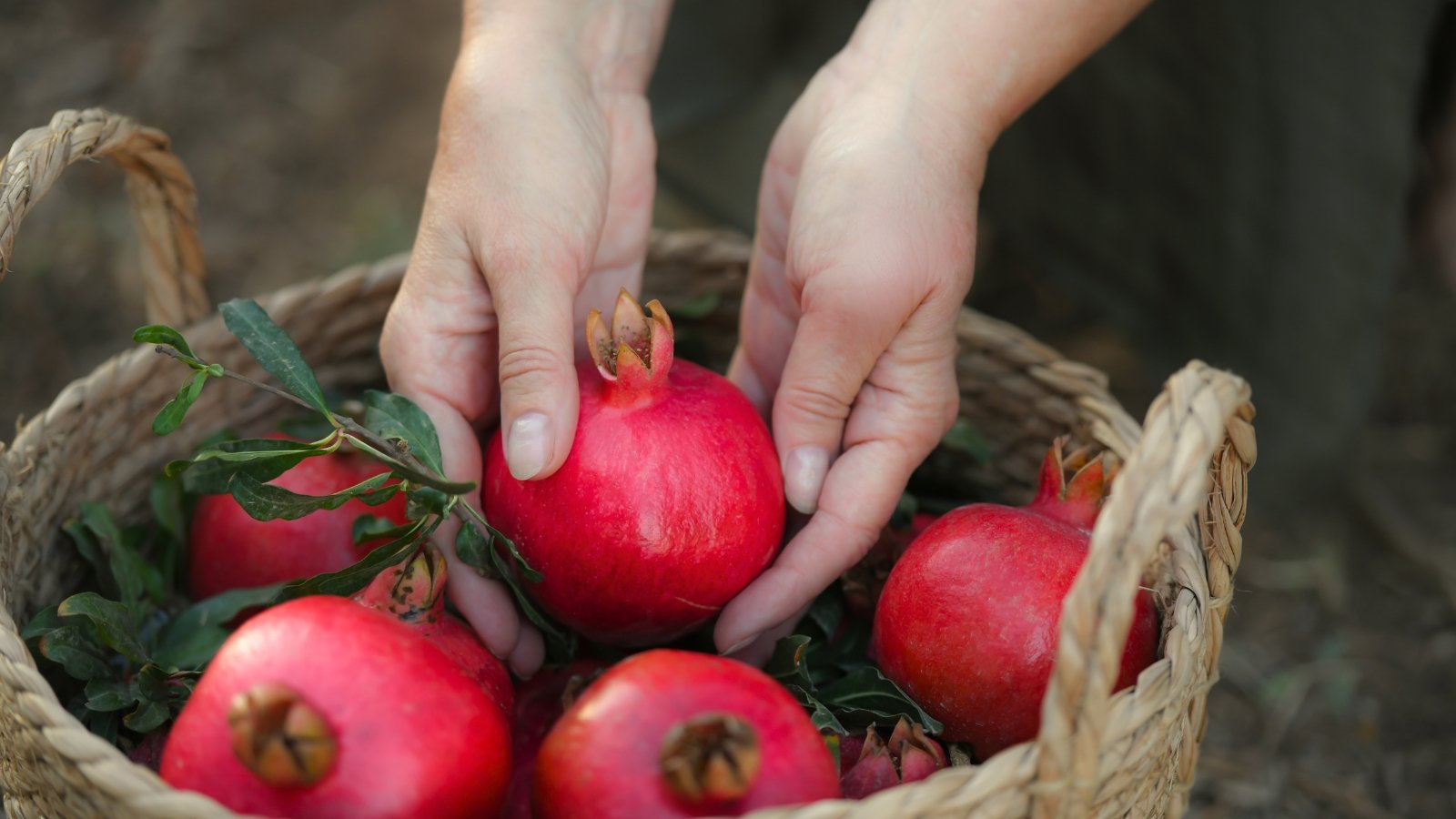

Overall, this piece does a good job of breaking down the essential aspects of growing and selecting pomegranates. The storage tips are especially useful for those who want to keep their fruits fresh for longer.
I found the tips on harvesting pomegranates quite informative. The emphasis on not waiting for the fruit to crack open is particularly noteworthy, as it seems like a common mistake many might make.
I appreciate how this article addresses common misconceptions about ripeness in pomegranates. It’s enlightening to learn that color alone isn’t always a reliable indicator, and that one should consider multiple factors.
This article provides a lot of useful information about pomegranates. I appreciate the detailed descriptions of ripeness indicators, especially weight and sound. It will be helpful for anyone looking to grow or buy these fruits.
The variety of pomegranate cultivars mentioned in this article is fascinating. I had no idea there were so many different types, each with unique characteristics. This makes me want to explore them more in my cooking.